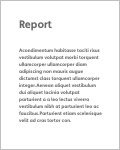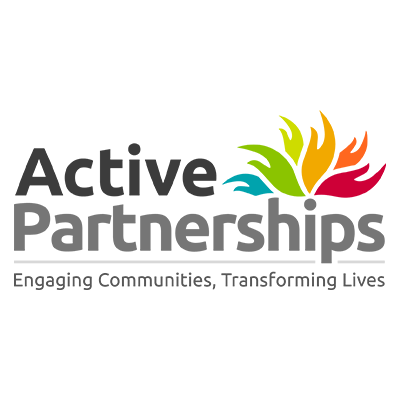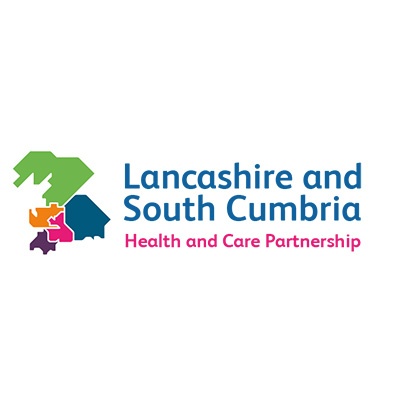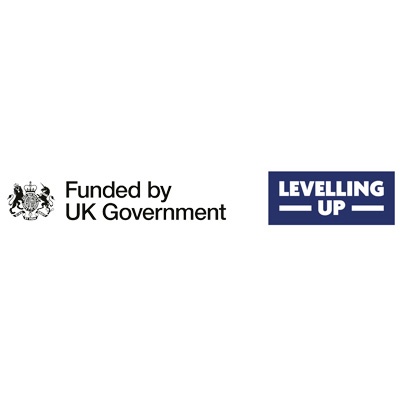External Research
Below are a range of sport and physical activity related tools and research papers that can be used to inform local plans and strategies.
The Active Women Programme was designed to increase the amount of sports activity undertaken by women living in disadvantaged areas and women caring for children under the age of 16.
£10m of National Lottery Funding was used to support 20 projects across England for three years from 2011.
The Active Lives Surveys measure the activity levels of people across England. There are two surveys, Active Lives Adults and Active Lives Children and Young People that give a comprehensive view of how people are getting Active.
Sport England have carried out a wide range of research to understand factors that influence sporting behaviour. Research areas include:
- Active Travel
- Getting Active Outdoors
- Sport and Age
- Sport and Education
- Sport and Families
- Sport and women
- Sport and ethnicity
- Sport and faith groups
- Sport, sexual orientation and gender identity
- Sport and disability
- Clubs and volunteering
- Economic conditions
- Events
- Sport and communities
- Participant profiles
- Sport satisfaction levels
- Market segmentation
- The sport workforce.
Visit the Sport England website to view the full range of research and insight on understanding audiences.
Sport England have carried out research into the benefits of sport to individuals, society and the economy. Research areas include:
- Sport and the economy
- Sport and health
- Social value of sport
- Value of sport monitor
- Sport outcomes evidence review
Visit the Sport England website for more information and to view the research into the benefits of sport.
UK Coaching have a range of guides, videos and podcasts available on their website covering a wide range of topics including data and analysis on coaching in the UK and evidence based guides and tips for coaches. Resources include:
- Coaching in The UK
- Social Value of Developing Coaches
- Coaching in the Active People Survey
Visit the UK Coaching website to download the full reports.
Activity Alliance have a wide range of resources available that can help you to engage more disabled people. Resources are from Activity Alliance themselves, and their members and cover topics such as:
- Access for all - opening doors
- Being Active Guide
- Charter for Change
- Inclusive Communications Guide
- Effective Engagement
- Gathering and using insight on disabled people
- Physical activity for disabled adults
The Activity Alliance website also contains links to studies commissioned, published and released by them, or in partnership with them.
The Local Authority Health Profiles provide an overview of health for each local authority in England. They pull together existing information in one place and contain data on a range of indicators for local populations, highlighting issues that can affect health in each locality.
The profiles are intended to help local government and health services make plans to improve the health of their local population and reduce health inequalities.
The profiles are updated every July and are available to download from the Public Health England website.
Public Health, assisted by Business Intelligence, within Lancashire County Council have created MSOA-cluster* child health profiles (CHPs). These complement the ones produced by Public Health England, which are at upper-tier authority and clinical commissioning group level only.
They are grouped into the following three areas: Central, East and North. Each name is linked to the respective profile document.
Central
- Chorley Central
- Chorley East
- Chorley West
- Leyland
- South Ribble East
- South Ribble West
- Preston Central
- Preston East
- Preston North
- Preston West
- Ormskirk & Newburgh
- Skelmersdale
- West Lancashire West
East
- Burnley Central
- Burnley North
- Burnley Outer
- Hyndburn East
- Hyndburn West
- Bowland
- Pendle Hill
- Barnoldswick
- Colne
- Nelson & Brierfield
- Rawtenstall & Bacup
- Rosendale East
North
- Fylde East & Broughton
- Lytham St Annes
- Lancaster Central
- Lancaster Coast
- Lancaster Rural
- Morcambe & Hesham
- Fleetwood
- Thornon Cleveleys
- Wyre Rural
*MSOA = middle layer super output area. These are a geographic hierarchy designed to improve the reporting of small area statistics.
Go Where Women Are is about engaging women in sport and exercise on their terms and in their space whether physically or emotionally. The insight pack explores our current understanding of women, their relevant motivations, barriers and triggers to getting more active, and what this means for sports and exercise activities and initiatives.
It pulls out key learnings that can be applied to most women and draws on a rich range of data, research and practical projects conducted over many years, including I Will If You Will pilot in Bury, Bloomingirls festival in Manchester and Active Women projects.
Deliverers of sport and exercise should use the insight from this review and tailor if needed with local research to understand the barriers, motivations and triggers of their target audience.
With Sport England's Local Insight Tool, you will be able to view their data at various geographies. In addition, users can also map dozens of other open data sources, providing insight into a wide range of socio-economic and demographic data down to the neighbourhood scale. Reports summarising the socio-economics of various local areas can also be freely downloaded.
The tool allows users to view and explore Sport England data for MSOA, Local Authority, Active Sport Partnership and Regional geographies, and combine this with a range of external open data.
Take a look at the Sport England Local Insight Tool. If you have any feedback or questions regarding the Sport England data included in Local Insight, please email [email protected].
The UK Chief Medical Officers' Physical Activity Guidelines set out the evidence for how much and what kinds of physical activity we need to do to keep ourselves healthy. They have now been updated to include additional guidance on being active during pregnancy and after giving birth, and for disabled adults.
In children and young people, regular physical activity is associated with improved learning and attainment, better mental health and cardiovascular fitness, also contributing to healthy weight status. In adults, there is strong evidence to demonstrate the protective effect on physical activity on a range of many chronic conditions including coronary heart disease, obesity and type 2 diabetes, mental health problems and social isolation. Regular physical activity can deliver cost savings for the health and care system and has wider social benefits for individuals and communities. These include increased productivity in the workplace, and active travel can reduce congestion and reduce air pollution.
Metro Blind Sport is a registered charity which delivers positive, life changing outcomes, through the creation of sporting and physical activity opportunities, to individuals with a visual impairment.
Metro Blind Sport is mainly focused on improving accessibility of sport and physical activity to individuals living in and around London, with opportunities for individuals from other parts of the country to benefit from national competitions organised and supported by the charity.
The research forms part of a wider Impact Report, commissioned by Metro Blind Sport, to examine the influence the charity is having on participation and to establish what more could be done to engage those with sight loss or a visual impairment.
Blind and partially sighted people are twice as likely as the rest of the population to be inactive. MBS hopes that, through insight like this, the charity will be able to work with physical activity delivery partners and other community groups to get more visually impaired people active.
Ten years since the publication of The Marmot Review, for the first time in more than 100 years life expectancy has failed to increase across the country, and for the poorest 10% of women it has actually declined. Over the last decade health inequalities have widened overall, and the amount of time people spend in poor health has increased since 2010.
#Marmot2020 confirms an increase in the north/south health gap, where the largest decreases were seen in the most deprived 10% of neighbourhoods in the North East, and the largest increases in the least deprived 10% of neighbourhoods in London.
Key points for the North West are:
- Life expectancy for women in the most deprived 10 percent of neighbourhoods decreased in every region except London, the West Midlands and the North West.
- By contrast, the North East, which previously shared with the North West the lowest levels of life expectancy until 2011–12, had a slower rate of improvement than the North West after 2012 to become the region with the lowest life expectancy in 2016–18 – at 77.9 and 81.7 years for males and females, respectively. For both men and women this is 2.8 years below the life expectancy in London.
- There are also clear regional differences in school readiness, which are not solely related to levels of deprivation. In 2017/18 the proportion of all children achieving a good level of development at the end of Reception was better in the South East, London and the East of England. The East and West Midlands, Yorkshire and the Humber and the North West regions performed worse than the national average (2). London performed best for children eligible for free school meals, followed by the West Midlands.
- Regionally, the North East, North West and East Midlands have the lowest levels of attainment at age 16 and London has the highest.
- In 2018, the North East, East Midlands, Yorkshire and the Humber and the North West had the highest rates of households with financial debt, while levels of debt in London declined throughout the period described.
- Between 2009/10 and 2019/20 the most deprived tenth of councils had their fiscal revenues per person decline by just under 30 percent, or £453 per person. In comparison, the least deprived tenth of councils saw their fiscal revenues decline by 16 percent, £166 per person (290). Cuts have also been more substantial in different regions: in the North East spending per person fell by 30 percent, compared with cuts of 15 percent in the South West (290). Neighbourhoods in the North of England, including the North West and Teesside (within the North East), and in the West and East Midlands, make up the majority of the most deprived neighbourhoods that are dealing with the largest cuts. At the neighbourhood level these cuts are substantial. For example, in Sheffield the ward with the deepest cuts, Firth Park, is estimated to have lost five times as much per working age adult as the least affected ward, Broomhill (291); Firth Park has the highest levels of child poverty in Sheffield (291) (292).
- Despite the reductions in budgets, the number of charities is increasing, however, the location of charities does not necessarily correspond to areas with highest need (297). In 2016/17 the largest density of charities was registered in the South West and the lowest in the North East, North West and London. Eight of the 10 most deprived neighbourhoods are in Blackpool, yet the town had the smallest number of charities operating relative to local population size (298)
- The North West and North East of England have the highest number of adults who are physically inactive, almost half; 47 percent of adults in the North West are physically inactive compared with 35 percent in the South West and 34 percent in the South East
The LGBT population of Lancashire is around 73,0001 (Lancashire and South Cumbria around 97,000) yet it is a hidden population in two ways: LGBT people are not visible and easily identifiable in daily life and there is little or no data available due to lack of inclusion in routine monitoring. This can mean that LGBT people are a ‘forgotten’ section of the population and often not included in strategic planning of services. We hope that the dissemination of this report will raise awareness about LGBT health and well-being and lead to LGBT inclusion in post-Covid planning and decision making.




